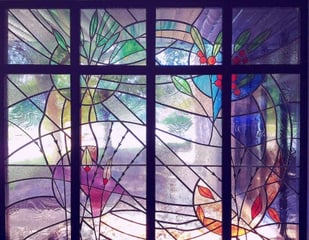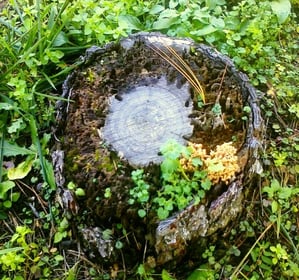 It is nice to have a more agile, popular, and vigorous image of the Pope to capture the imagination of the young who may not necessarily see the Catholic church as something of universal or international global significance. It might also do well for adult Catholics in their various camps and reactions to Vatican II, the Papacy or Curia to experience yet again the movement of the Spirit in the world requiring of us a better communion between doctrinal finesse and faithful living. But how do we make sense of these changes?
It is nice to have a more agile, popular, and vigorous image of the Pope to capture the imagination of the young who may not necessarily see the Catholic church as something of universal or international global significance. It might also do well for adult Catholics in their various camps and reactions to Vatican II, the Papacy or Curia to experience yet again the movement of the Spirit in the world requiring of us a better communion between doctrinal finesse and faithful living. But how do we make sense of these changes?
In my own parish, the waves of change are many. Our pastor of almost 25 years retired roughly around the same time that Pope Emeritus Benedict did the same. The unprecedented nature of that event was felt in our parish in parallel fashion. We knew the church would continue, but so much of our past was about to also change. Not long thereafter, one of our parochial vicars also retired, leaving only myself and the Business manager as original staff members since I had arrived almost a decade ago.
Our new pastor, an Atonement Friar like his predecessor, began his term by strengthening ties with the diocese and USCCB by advocating participation in more of their programs. A canon lawyer who studied in Rome, he often shared detailed insight into the papal selection process then and the latest news about Pope Francis now. This was very different than the past 25 years in which our local parish grew up modeled by the Franciscan religious order that was less about the global sweep of an institutional church and more the relational encounter with the other (particularly the migrant) and responding with hospitality and gratitude.
 We were (and indeed always are) a missionary church in the world. But we don’t always have control over the optics and PR of how we are represented as Catholics in that world. As alienating and disjointed as some of the reporting on Pope Francis can be to Catholics, some of our own programming from the USCCB or the diocese can also be mismatched on the local level if it is not well interpreted into our ongoing experience of the parish we have grown to be.
We were (and indeed always are) a missionary church in the world. But we don’t always have control over the optics and PR of how we are represented as Catholics in that world. As alienating and disjointed as some of the reporting on Pope Francis can be to Catholics, some of our own programming from the USCCB or the diocese can also be mismatched on the local level if it is not well interpreted into our ongoing experience of the parish we have grown to be.
In years past at my parish, I used to hold fast to the liturgical year as my basic compass. I ordered my parent meetings and worked my curricula around this because I knew it to be a constant. These moments of Advent/Christmas, Lent/Easter/Pentecost, and Ordinary Time would be what punctuated and informed our liturgical celebrations, marking our outlook upon the world and forming and informing our own role in it as disciples. This is the journey we would take year after year, grade after grade, sacrament after sacrament.
Our former pastor was of like mind. Yet he cautioned me that only contemplatives and people who had spent time in religious community (or in my case, the catholic educational system) were cognizant of these seasons and conformed their lives to them. Most others were living in a “secular” or busy world. Such people stopped by the church (hopefully) weekly. But that was not the same as living in a community where everything changed each liturgical season. Not just the colors of the altar or the celebrant’s robes, but the food in the cafeteria, the prayers throughout the day, the different tasks that came with each season. Like it or not, we do live in a world where the seasonal aisles slip effortlessly from Superbowl to Easter bunnies and where traffic tolls and road construction modify our journeys far more than the lectionary cycle.
So at present, I do not know what our internal compass is at our parish. While I am not opposed to linking to programs set by the USCCB (it’s Year of Faith, it’s Catechetical Sunday and themes) or participating in diocesan programs, I do see it as a departure from where we have been.
Every new activity seems like a boon for the publishing industry. Everything comes with prayer cards, pamphlets, and bilingual posters. But at least for me, I am not yet well seasoned to see in these things sacramentals pointing us toward greater communion and an awareness of our place and mission. It seems to impress upon us ecclesia without necessarily forming us in koinonia/communio.
The former pastor was here for almost 25 years. I’ve been a parishioner for almost 15. When I arrived, I was animated by social justice and catholic social teaching. But I found that people like that tended not to just talk about it, they put their heads down and just did it. So I met with and worked alongside parishioners and others who welcomed the stranger and fed the hungry, clothed the naked, visited the sick and imprisoned. Literally.
As a DRE, I had a hard time getting these same people to be catechists and I had a hard time turning out people from the classrooms to go out into the world. The institutional church of RE programs and the missionary church of solidarity existed in this one parish, but rarely together consciously in the same season or manner. And the same truth remains today. We just have more slogans and pamphlets to bolster the many different ways we might go off on our own to be church.
My former pastor would say, “Church work can get lonely.” And as his retirement grew closer he would advise me, “Just put your head down and remember your prayers.”
Copyright 2013 Jay Cuasay
About the Author
Jay Cuasay
Jay Cuasay is a freelance writer on religion, interfaith relations, and culture. A post-Vatican II Catholic father with a Jewish spouse, he is deeply influenced by Christian mysticism and Zen Buddhism. He was a regular columnist on Catholicism for examiner.com and a moderator and contributor to several groups on LinkedIn. His LTEs on film and Jewish Catholic relations have been published in America and Commonweal. Jay ministered to English and Spanish families at a Franciscan parish for 13 years. He can be reached at TribePlatypus.com.


.png?width=1806&height=731&name=CatholicMom_hcfm_logo1_pos_871c_2728c%20(002).png)
Comments